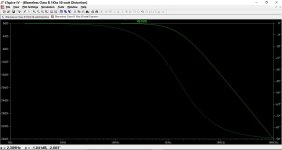Hi out there!
I have a Quilter Tone Block 200, it's a great sounding Class D guitar amp head that weighs 4 pounds. I bought it to be a backup in case my non-reissue 1965 Fender Twin has problems. So the Twin becomes my speaker cabinet when I need to use the Quilter. I can get the Quilter to sound pretty close to some of the tones my Twin produces, but not the tones I use. The biggest difference is that I roll off the highs when using the Twin.
As Tone Block 200 owners have noticed, there's no easy way to roll off the highs with this head. Can I add a capacitor between the speaker wires to roll off the highs?
Thanks!
I have a Quilter Tone Block 200, it's a great sounding Class D guitar amp head that weighs 4 pounds. I bought it to be a backup in case my non-reissue 1965 Fender Twin has problems. So the Twin becomes my speaker cabinet when I need to use the Quilter. I can get the Quilter to sound pretty close to some of the tones my Twin produces, but not the tones I use. The biggest difference is that I roll off the highs when using the Twin.
As Tone Block 200 owners have noticed, there's no easy way to roll off the highs with this head. Can I add a capacitor between the speaker wires to roll off the highs?
Thanks!
Simple answer is no. You need to add the correction to the input of the amp, not the output. A resistor and cap will give you a 'first order' roll off, however its impossible to suggest exact values, you would have to experiment.
Try a 10k and 0.01uf cap in series across the input feed and take the amp output (edit... meaning the input to the amplifier) from the top of the cap. That would give a response like this. Make the cap and/or resistor bigger or smaller to suit.
Try a 10k and 0.01uf cap in series across the input feed and take the amp output (edit... meaning the input to the amplifier) from the top of the cap. That would give a response like this. Make the cap and/or resistor bigger or smaller to suit.
Attachments
Thanks Mooly! I'm wondering though... I neglected to mention the Tone Block 200 adds distortion to the signal. Rolling off the input might not give me the sound I'm after, since the amp is going to add high frequencies and send them to my speakers.
All you could do is try it. I would have thought that any effects and distortion deliberately added to the signal would have been done at low level before the main amplifier.
Modifying the output of an amplifier to achieve a desired response is fraught with difficulty for several reasons. The amplifier always likes to see a well defined impedance as a load and adding something to the output of an amplifier is then going to interact with the speaker impedance. Any frequency shaping network is going to upset that. The other big problem is power dissipation in the shaping network. It would of necessity all need to be very low impedance... its just not practical. And not forgetting this is a class D amp and so that makes altering the speaker output even more difficult.
Modifying the output of an amplifier to achieve a desired response is fraught with difficulty for several reasons. The amplifier always likes to see a well defined impedance as a load and adding something to the output of an amplifier is then going to interact with the speaker impedance. Any frequency shaping network is going to upset that. The other big problem is power dissipation in the shaping network. It would of necessity all need to be very low impedance... its just not practical. And not forgetting this is a class D amp and so that makes altering the speaker output even more difficult.
- Status
- Not open for further replies.
